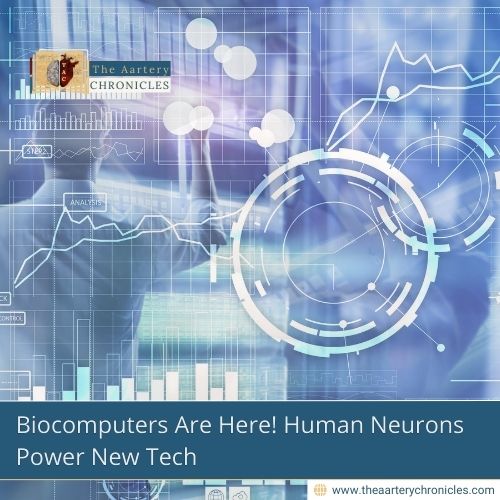

Biocomputers Are Here! Human Neurons Power New Tech
In a groundbreaking innovation that merges technology with biology, an Australian startup has unveiled the world’s first commercial biocomputer powered by human brain cells. This revolutionary development by Melbourne-based Cortical Labs introduces a new category of artificial intelligence known as “Synthetic Biological Intelligence” (SBI), which promises faster learning and greater efficiency compared to traditional AI systems.
Merging Human Neurons with Technology
The CL1, officially launched on March 2, 2025, in Barcelona, is a hybrid system that combines living human neurons with silicon chips. Unlike traditional artificial neural networks, Cortical Labs uses real human cells, derived from skin or blood, and converts them into brain cells. These neurons are then grown onto computer chips to create a self-learning and adaptive computing system.
According to Dr. Hon Weng Chong, the founder and CEO of Cortical Labs, this approach enables the bio-computer to process information more efficiently and with significantly less energy than standard silicon-based AI models.
How Does the CL1 Biocomputer Work?
The CL1 utilizes human-cell neural networks, which continuously evolve and adapt, forming an organic computing system. These networks learn more rapidly and flexibly than conventional AI chips used to train large language models like ChatGPT. This cutting-edge approach opens new possibilities in various fields, from medical research to robotics, by offering more personalized and efficient computing solutions.
Potential Applications and Future Impact
This biocomputing technology could revolutionize industries such as drug discovery, personalized medicine, and automation. The ability of biological neurons to self-organize and adapt makes them ideal for tackling complex problems that require real-time learning and decision-making.
Cortical Labs is currently building biological neural network server stacks, each comprising 30 cell-based computing units. The first of these stacks is expected to be operational in the coming months. By the end of 2025, the company plans to have four fully functional stacks accessible via a cloud-based system.
Affordable Innovation
One of the standout features of the CL1 is its cost-effectiveness. With an initial price of around $35,000, it is significantly more affordable than other high-end AI computing technologies, which can cost up to $85,000. This affordability could make advanced biocomputing technology accessible to a wider range of researchers and developers.
A Step Toward the Future
Cortical Labs first made headlines in 2022 when it developed a self-learning “computer brain” using 800,000 human and mouse neurons to play a video game. Since then, the company has continued to refine its technology, demonstrating how human-induced pluripotent stem cells (hiPSCs) can be integrated into high-density multielectrode arrays (HD-MEAs) to create efficient, self-organizing neural networks.
Conclusion
As the CL1 moves towards mass availability in late 2025, it marks a significant step forward in the evolution of artificial intelligence and computing. This fusion of human biology with technology could redefine the future of AI, unlocking new levels of intelligence, adaptability, and efficiency.
Source: Inputs from various media Sources

Priya Bairagi
Reviewed by Dr Aarti Nehra (MBBS, MMST)
I’m a pharmacist with a strong background in health sciences. I hold a BSc from Delhi University and a pharmacy degree from PDM University. I write articles and daily health news while interviewing doctors to bring you the latest insights. In my free time, you’ll find me at the gym or lost in a sci-fi novel.








